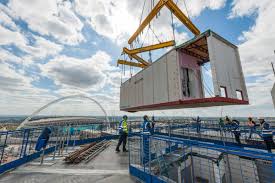Modular construction is inventive and complex read more here. Building modules in a factory before assembling them on-site needs careful planning, design precision, and effective implementation. Understanding this procedure from start to finish explains why modular construction is gaining popular in numerous construction sectors.
A modular construction project starts with design. Since it lays the groundwork for the project, this stage must be carefully planned. Modular construction requires a finalized design, unlike traditional construction, where some design elements can be changed during construction. Architects and engineers work together to produce precise blueprints for modular construction, taking into account factors like module shipping and space constraints. Using advanced technologies to build 3D models, this step shows the finished structure.
After design, pre-construction begins. This requires careful material and component selection to meet design and quality standards. Sustainability, energy efficiency, and material durability are considered now. The design team and production facility must coordinate to verify that all design elements are practical and fit the manufacturing capabilities.
Module manufacturing in a plant follows. This controlled atmosphere is a major benefit of modular construction. Work may continue regardless of weather, improving efficiency and reducing delays. The plant allows stringent quality control to ensure each module fulfills criteria. Teams of skilled people and advanced machines build modules with walls, floors, ceilings, and occasionally pre-installed electrical and plumbing systems.
The modules are transported to the construction site after construction. This stage demands careful logistical planning, considering module size, transit routes, and site accessibility. Because it includes transferring massive, prefabricated building pieces, the transportation process is a crucial part of modular construction.
Arrival at location starts assembly. Connecting modules on a pre-prepared foundation creates the final structure. Often, this phase takes only a few days. Factory precision ensures modules fit flawlessly, reducing on-site adjustments.
Finishing touches are the last step. This includes outside cladding, interior finishing, and utility connections. The building comes alive at this phase, turning from a collection of pieces into a working structure.

